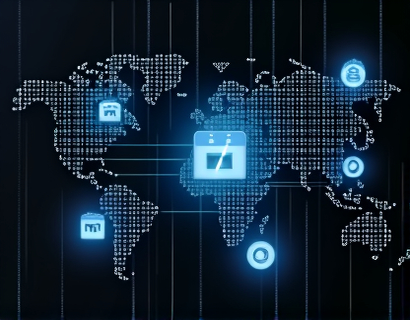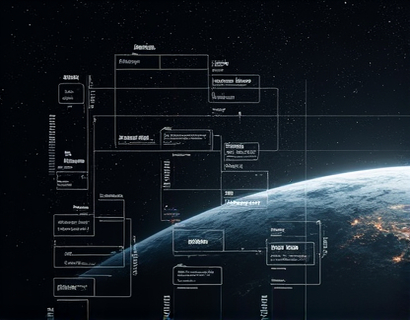Agricultural Software: Elevating Farm Operations with Tailored Tech Solutions
In recent years, the integration of advanced software solutions into agricultural operations has revolutionized the way farming businesses and professionals manage their day-to-day activities. This transformation is driven by the need for enhanced efficiency, productivity, and sustainability in an increasingly competitive market. Tailored tech solutions are not just a luxury but a necessity for modern agriculture, enabling farmers and agricultural organizations to optimize their resources, reduce costs, and improve yields.
Enhancing Efficiency Through Automation
One of the primary benefits of agricultural software is the automation of routine tasks. From scheduling irrigation systems to monitoring crop health, these tools take the burden off farmers, allowing them to focus on strategic decision-making. Automation reduces human error and ensures that tasks are completed consistently and on time. For instance, precision agriculture technologies use GPS and sensor data to automate planting, fertilizing, and harvesting processes, leading to more efficient use of inputs and higher crop yields.
Improved Data Management
Data is the backbone of modern agriculture, and effective data management is crucial for informed decision-making. Agricultural software solutions provide robust platforms for collecting, storing, and analyzing vast amounts of data. This includes weather patterns, soil moisture levels, crop growth stages, and market trends. By centralizing data in a single, accessible location, farmers can make data-driven decisions that optimize resource allocation and maximize profits. Advanced analytics and machine learning algorithms further enhance the value of this data, offering insights that were previously unattainable.
Streamlined Processes for Better Coordination
Agricultural operations involve multiple stakeholders, including farmers, suppliers, and distributors. Software solutions streamline communication and coordination among these parties, ensuring that everyone is on the same page. Task management tools allow for the assignment and tracking of responsibilities, while project management features help in planning and executing complex operations. This level of coordination reduces delays and miscommunications, leading to smoother and more efficient operations.
Informed Decision-Making
The ability to make informed decisions is critical for the success of any farming business. Agricultural software provides real-time data and analytics that help farmers and agricultural professionals understand their operations better. For example, crop monitoring systems can detect early signs of disease or pest infestations, allowing for timely interventions. Market analysis tools provide insights into price trends and consumer demand, enabling farmers to adjust their production and sales strategies accordingly. This data-driven approach minimizes risks and maximizes opportunities.
Sustainability and Resource Optimization
Sustainability is a key concern in modern agriculture, and software solutions play a vital role in promoting environmentally friendly practices. Precision agriculture technologies help in optimizing the use of water, fertilizers, and pesticides, reducing waste and minimizing the environmental impact. By applying inputs only where and when they are needed, farmers can conserve resources and reduce costs. Additionally, software can track and report on sustainability metrics, helping farms meet regulatory requirements and gain certifications.
Scalability and Flexibility
Agricultural software is designed to be scalable and flexible, accommodating operations of all sizes. Smallholder farmers can benefit from simple, user-friendly tools that provide essential insights and automation, while large agribusinesses can leverage advanced systems to manage complex supply chains and large-scale operations. This scalability ensures that farmers at any stage of their journey can access the technology they need to improve their operations.
Integration with IoT and AI
The convergence of Internet of Things (IoT) and Artificial Intelligence (AI) with agricultural software is opening new frontiers in farm management. IoT devices, such as sensors and drones, collect real-time data on various parameters, which is then processed by AI algorithms to provide actionable insights. For example, AI-powered image recognition can identify crop health issues from drone footage, while IoT-enabled irrigation systems adjust water usage based on soil moisture levels. This integration enhances the accuracy and effectiveness of agricultural practices.
Challenges and Considerations
While the benefits of agricultural software are clear, there are challenges that need to be addressed. One major concern is the digital divide, where smallholder farmers in remote areas may lack access to the necessary technology and internet connectivity. To bridge this gap, initiatives focused on affordable and accessible technology solutions are essential. Additionally, training and support are crucial to ensure that farmers can effectively use these tools. Software providers must offer user-friendly interfaces and comprehensive training programs to facilitate adoption.
Case Studies and Success Stories
Numerous case studies demonstrate the positive impact of agricultural software on farm operations. In one instance, a medium-sized farm in the Midwest implemented a precision agriculture system that included GPS-guided equipment and real-time soil moisture monitoring. The result was a 20% increase in crop yields and a 15% reduction in water usage. Another example is a cooperative of smallholder farmers in Africa who used a mobile app to access market prices and weather forecasts, leading to better decision-making and increased income.
Future Trends in Agricultural Software
The future of agricultural software is promising, with several trends on the horizon. One such trend is the increased use of blockchain technology for traceability and transparency in the supply chain. Blockchain can ensure that products are tracked from farm to table, enhancing consumer trust and enabling farmers to command higher prices for their products. Another trend is the development of more intuitive and accessible user interfaces, making advanced technologies more approachable for farmers with varying levels of technical expertise. Additionally, the integration of augmented reality (AR) and virtual reality (VR) is being explored for training and remote assistance, further enhancing the capabilities of agricultural software.
Conclusion
The adoption of agricultural software is transforming the way farming operations are managed, offering numerous benefits that extend beyond efficiency and productivity. By embracing these technologies, farmers and agricultural professionals can make more informed decisions, optimize resources, and adapt to the challenges of a changing world. As the agricultural sector continues to evolve, the role of software will become increasingly central, driving innovation and sustainability in the industry.










































